
Hybrid Goose
With two doctor appointments this week, plus a day of computer post-processing (explained later), I didn't have a lot of time for birding. Even though I wasn't birding that much, I still ended up with 34 avian species here in Old Trail. But first an update.
Old Trail; December 6I went over to the golf course pond early afternoon, and there was a large white goose in the pond with some Canada Geese. The white goose is clearly a hybrid, but I hadn't been able to know for sure what kind. I later found out what looks to be the same goose was spotted on Lickinghole Basin (a few miles away) on December 3, and was posted on eBird as a Graylag x Canada hybrid. I posted the photos on the Facebook hybrid birds group, and the general concensus is that it was a barnyard (Graylag) x Canada hybrid.

Hybrid Goose
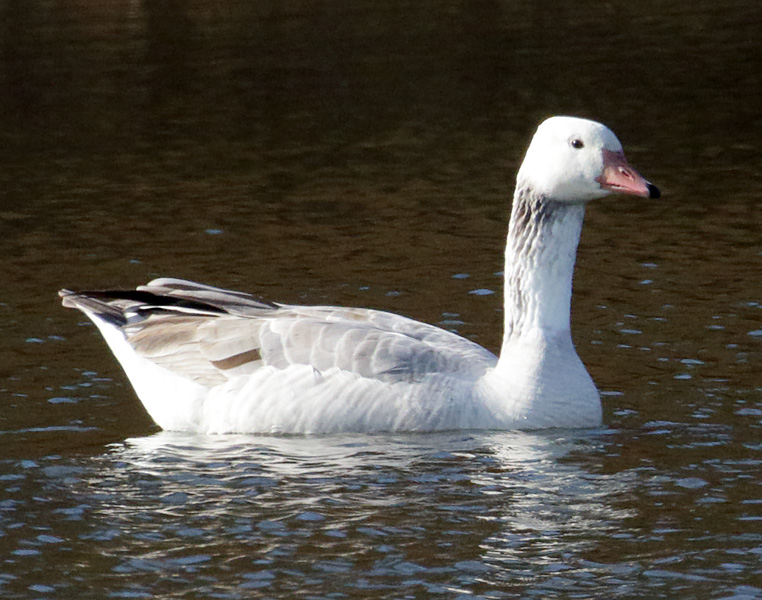
Hybrid Goose

Hybrid Goose
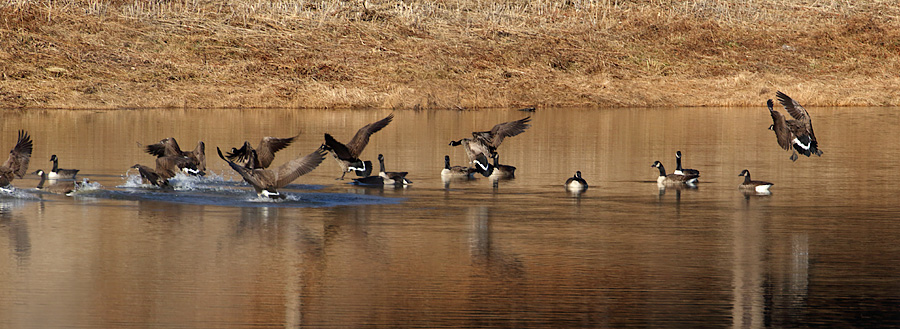
Some of the 60+ Canada Geese on the golf course pond
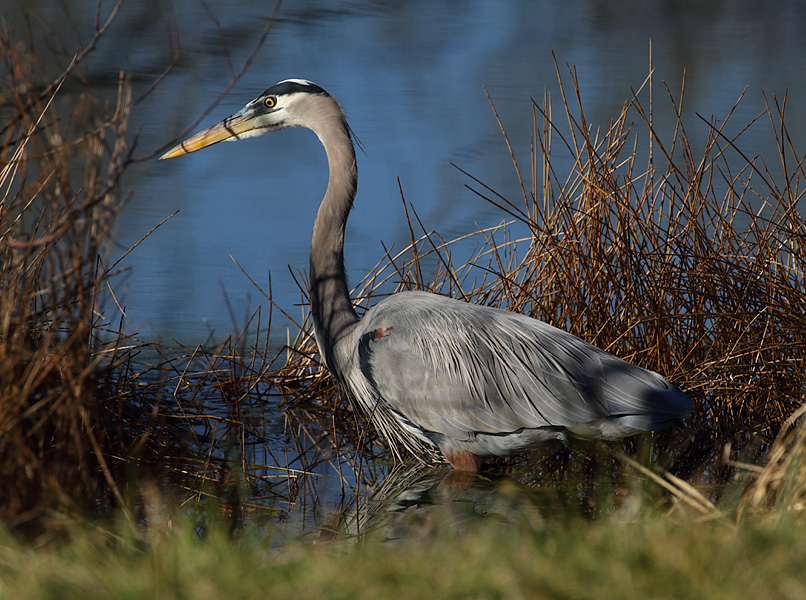
Great Blue Heron

Juvenile Red-shouldered Hawk
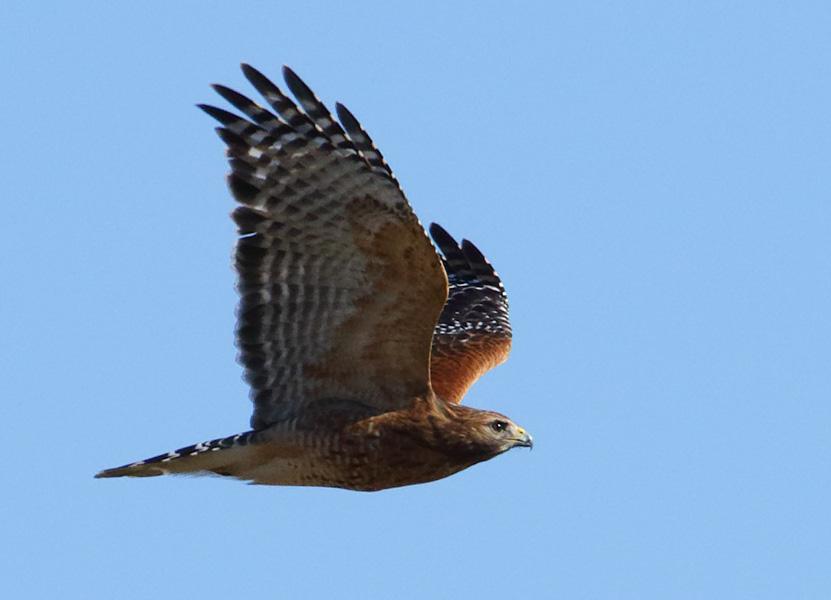
Adult Red-shouldered Hawk
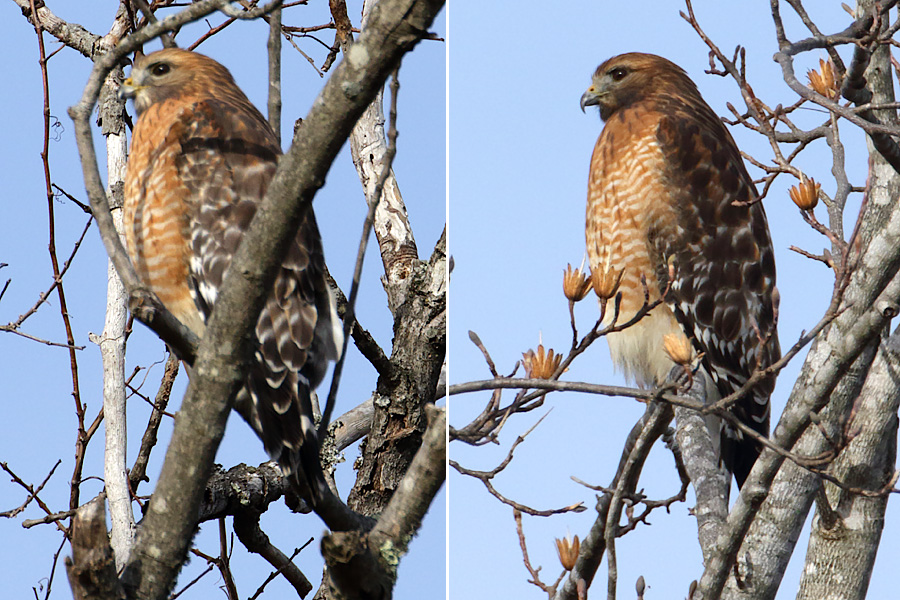
Mama and papa Red-shouldered Hawks
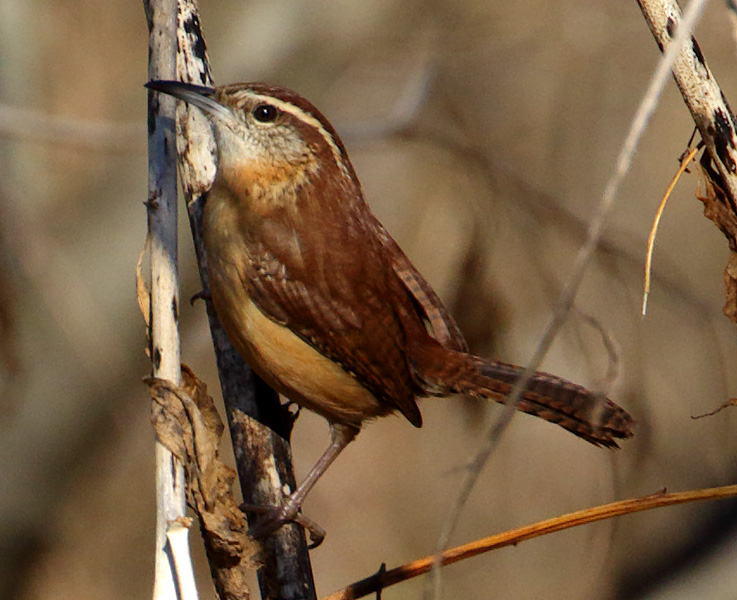
Carolina Wren
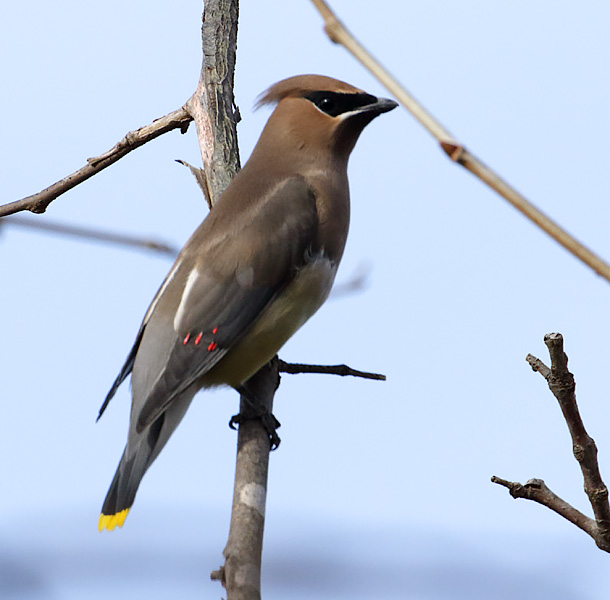
Cedar Waxwing
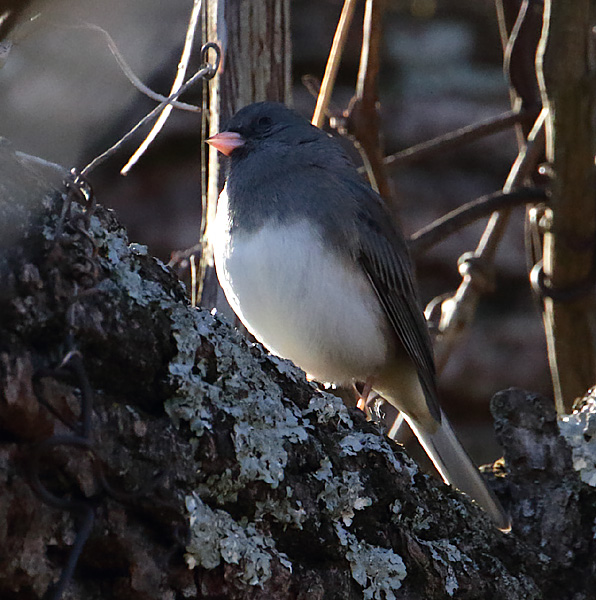
Dark-eyed Junco
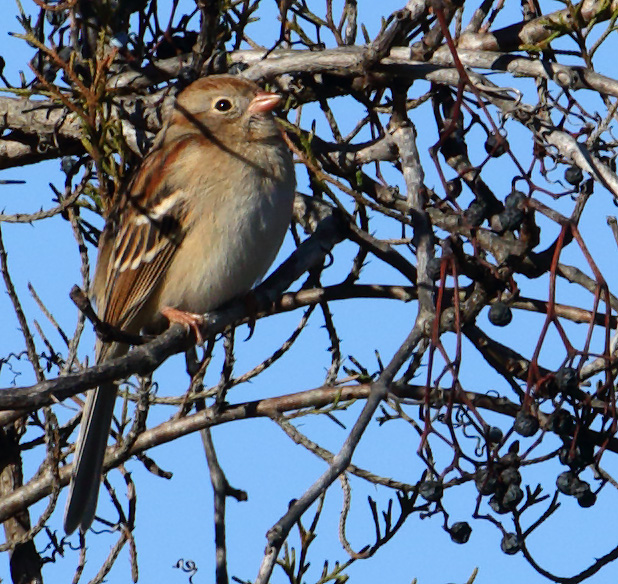
Field Sparrow
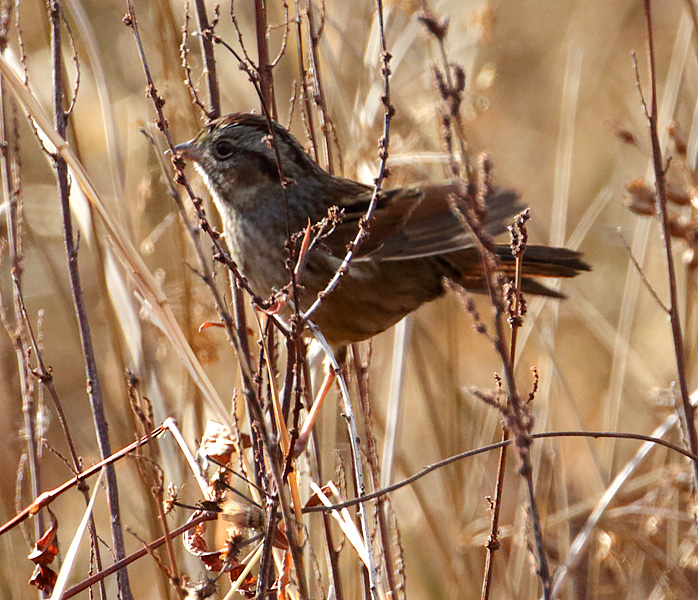
Swamp Sparrow
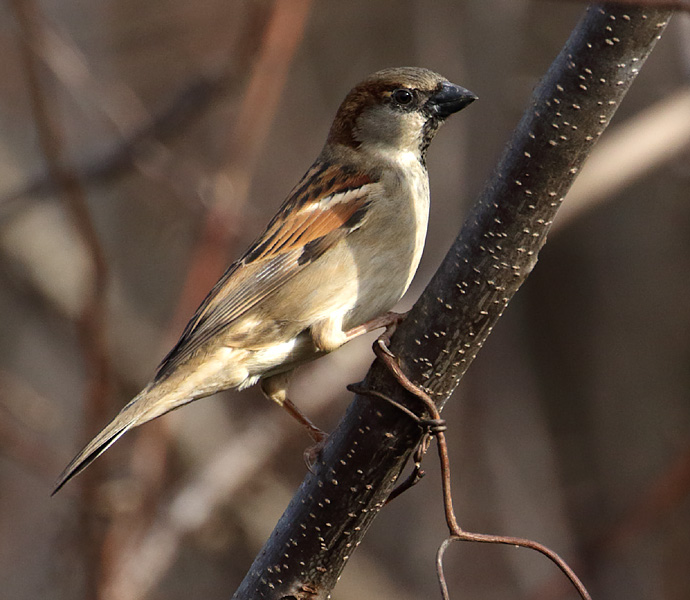
House Sparrow
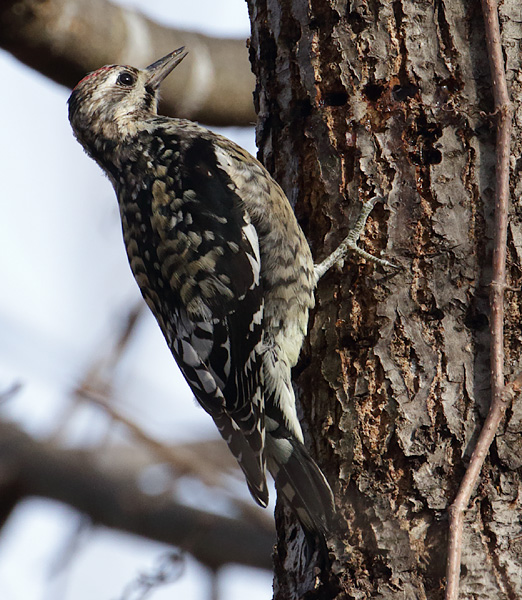
Yellow-bellied Sapsucker
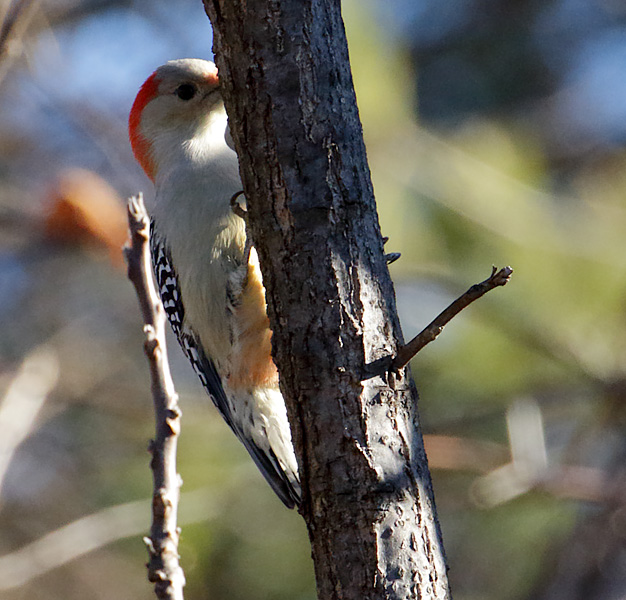
Red-bellied Woodpecker
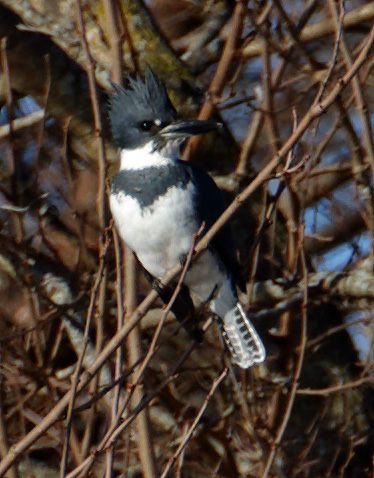
Belted Kingfisher
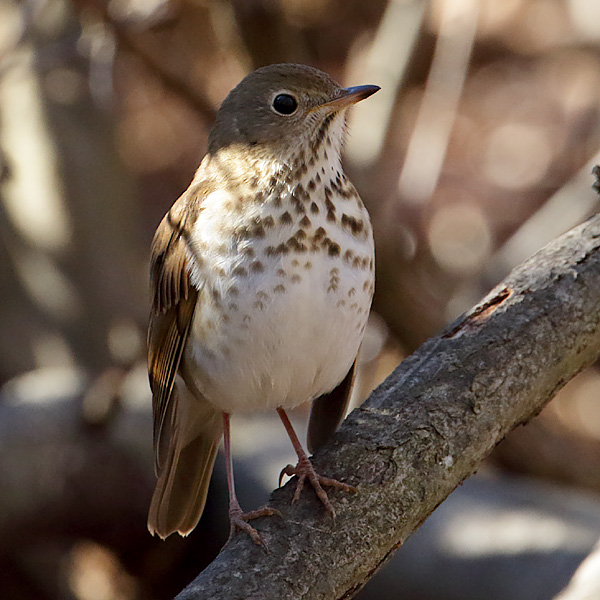
Hermit Thrush

Yellow-rumped Warbler

Tufted Titmouse
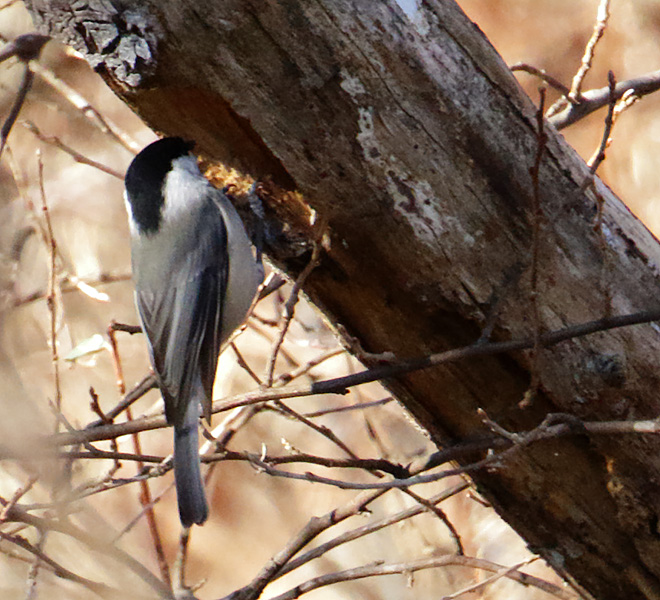
Carolina Chickadee
Near the end of my hike, I heard a bird call that I knew that I had heard before, but couldn't remember what it was. I then opened the Merlin sound ID app. I rarely use this app, but when I can't recall a bird song or call, it can be of some help. It immediately posted "Black-capped Chickadee." Well, now I had another challenge. There was a flock of six or more Carolina Chickadees flitting about, and I know that Carolina and Black-capped Chickadees can learn each other's songs and calls. So I had to find the one doing the Black-capped call to make sure. And finally I found it. This is only the 3rd Black-capped Chickadee I have seen in central Virginia east of the Blue Ridge Mountains. They are usually west of the Shenandoah Valley or much farther to the north. This species is my Old Trail avian species # 166, and brings the Old Trail avian list to 192 species.
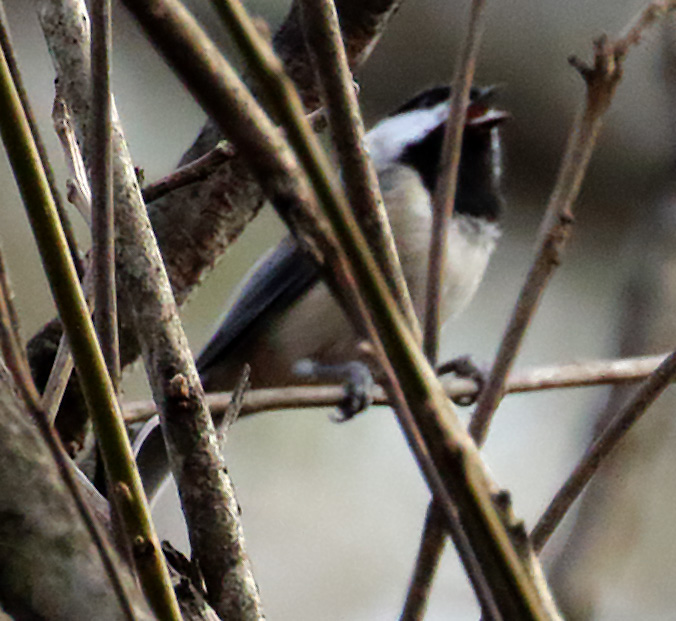
Black-capped Chickadee
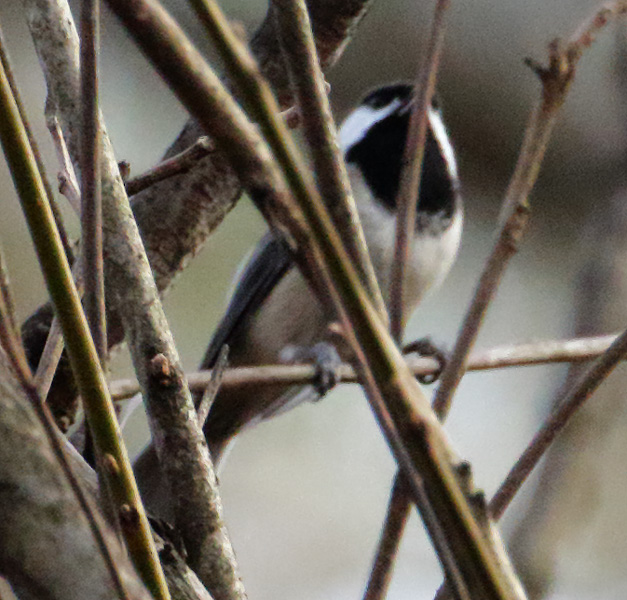
Black-capped Chickadee
On a sad note, I saw that an old and very large dead tree had been cut down. This huge tree has been dead and solidly standing for more than seven years, and I don't know why it was cut down. It was the home to at least two woodpecker species (Red-bellied and Downy), and the top of the tree was a hunting perch for our Red-shouldered Hawks.

Cut down tree
Old Trail has a four mile loop trail (Lindy Bain Trail) with trail off-shoots from it, Western Park (Albemarle County Community Park) soccer field and wetlands, and another trail in the Creekside section of Old Trail. While I sometimes bird all of these trails on different outings, I usually confine a two hour hike to two or three trail sections: the loop trail from Golf Drive to around the golf course pond and up to, or a little past golf green #1; the loop trail along Slabtown Branch Creek from Old Trail Drive to the southeast corner of Old Trail and sometimes a bit farther; and Western Park around the soccer field and down to the community garden.
I did not go birding this day, and other birders saw and photographed a Nashville Warbler along the soccer field near Old Trail Drive, and posted it on eBird. Where they saw the Nashville Warbler was one of the two usual locations in Old Trail where I have seen Nashville Warblers during migration, but the latest date for one of my sightings of this species was November 4 (2021). It was a perfect day for birding, and I would have seen it if I went out to do some birding, but I spent the day inside doing computer post-processing.
Some of my birding friends know that in 2021, I restarted an old hobby of mine: astrophotography. I did a lot of film-based astrophotography in the mid-1980s through the mid-1990s, and in 2021, I wanted to see what I could do with my digital cameras and wildlife lenses. So I bought a little more equipment and got hooked again.
I've been wanting to get a decent image of the Horsehead Nebula in the constellation of Orion ever since I started doing film based astrophotography in the mid-1980s. This small, dark nebula gets its name from its shape, and is only visible because it blocks some of the red emission nebula behind it. Nebulae are clouds of interstellar gas where stars are born as the gaseous material condenses into tightly packed masses. Emission nebulae have one or more bright stars nearby that cause the gases to emit energy primarily in the reddish hydrogen-alpha part of the spectrum. Reflection nebulae have one or more bright stars nearby but not close enough to cause emission, and only bluish light from the stars is reflected.
I went out late on December 11 here in Old Trail under clear skies, but also cold temperatures, for another try. It was more than an hour past midnight when I finally got some sleep. The Horsehead Nebula is located near Alnitak, the leftmost star in the belt of Orion. The Flame Nebula and small reflection nebulae are nearby as well. When aligning my camera for the photos, I took one shorter focal length image showing the locations of stars and nebulae in relation to the Orion Nebula. Of course, there was an airplane flying through the field of view, as well as a Starlink satellite.
By the time I finished, I had taken more than 60 images of the Horsehead Nebula, and spent most of the day on December 12 post-processing them. I needed to remove residual star trails in each image, and then stacked the best 80% of them. The final step was to enhance the details and colors in the final image.

Orion
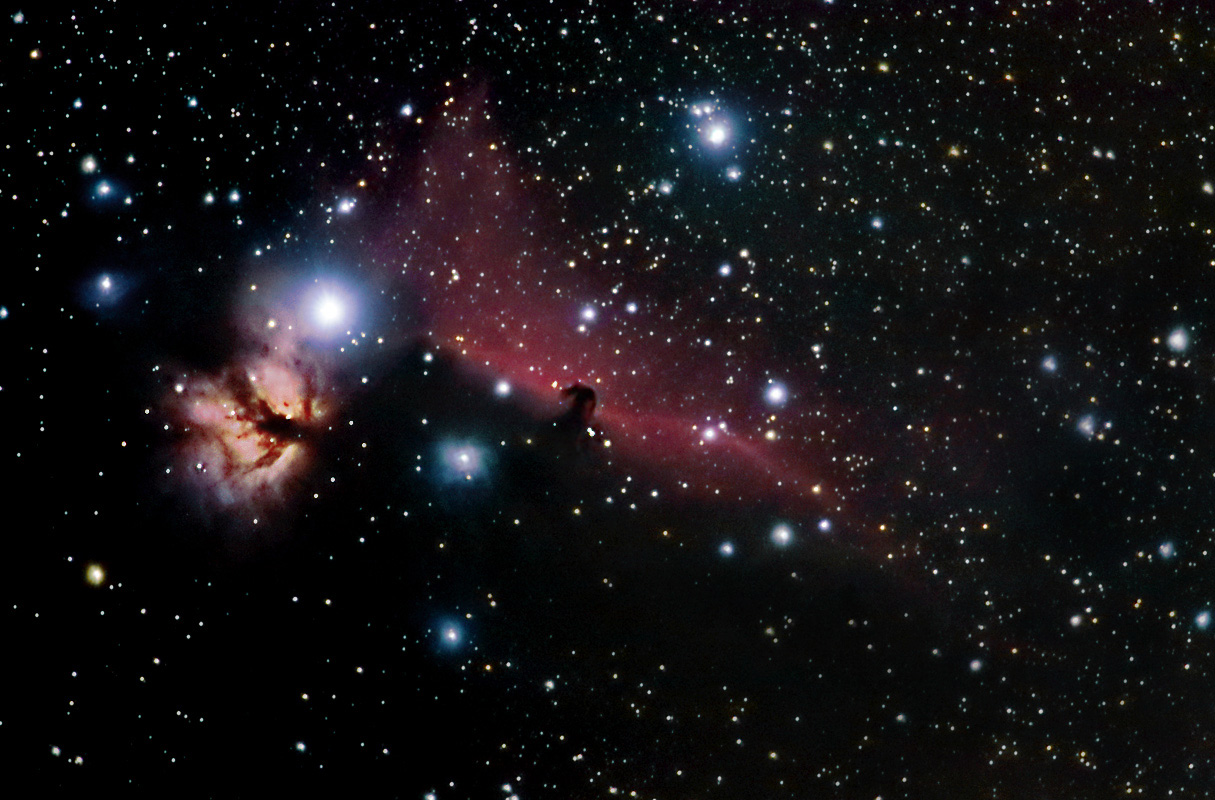
Horsehead and Flame nebulae
I didn't read about the Nashville Warbler until the next day (December 13), and looked for it each day through the 16th, but it was only a one day stopover for this very late migrating warbler.
Nostalgia In the spring of 1958, my 6th grade class spent a week at the school district's Camp White Cloud located at Quiver River State Park in Missouri. I was one of the few students to sign up to go on a early morning bird walk - only because it was being conducted by Mr. Connors. Next to watching Mr. Wizard (Don Herbert) on television, Mr. Connors was my favorite teacher. After I raised my hand to go, he said we were leaving at 5:30 a.m. the next morning!
On my first bird walk, we saw a Rose-breasted Grosbeak, an Indigo Bunting, a Scarlet Tanager, and a Red-eyed Vireo. That would be my last bird walk until December 2006. The day after the bird walk, our class was getting some sort of outdoor demonstration, and a Summer Tanager landed on the bright red hat of our 6th grade teacher, Ms. Nell Quarles - we laughed, but she stood very still and let it sit there for a minute or so. I knew immediately what it was, as Mr. Conners had told us the difference between Scarlet and Summer Tanagers the day before. At that point, my list of life birds was at least 12, the five new birds at Camp White Cloud, Cardinals, Ruby-throated Hummingbirds, Robins, Flickers and Red-headed Woodpeckers in my backyard, the Blue Jay that had pecked my brother Dave on the head, and House Sparrows.
My brother Dave had been an avid birder since his early teenage years, but I had other interests. However, when I was in high school and friends were talking about going hunting with their fathers, I thought that would be neat to do, except that I would take a camera with me instead of a rifle or a shotgun. But I never had the time nor the subject matter to pursue wildlife photography.
In December 2006, when my wife and I had moved to central Virginia six months earlier, one of my sons sent me a bird feeder. I saw this neat little bird, and took a photo of it. I had no idea what kind of bird it was, but I was hooked.

December 28, 2006 (Tufted Titmouse)
But I did know someone who would know - My Brother Dave (click to learn more about him.).
In January 2007, my wife and I were taking a walk in Stoney Creek (Rockfish Valley section of Wintergreen where we lived until 2016), and there was a Red-shouldered Hawk right next to the road about 10 feet off the ground. I didn't have a camera with me, and it was another mile hike by the time we got home. I thought about that hawk for about 15 minutes after arriving home, and decided to get my camera and drive back to where we has seen the hawk. It was still there, and I got my first hawk photo.
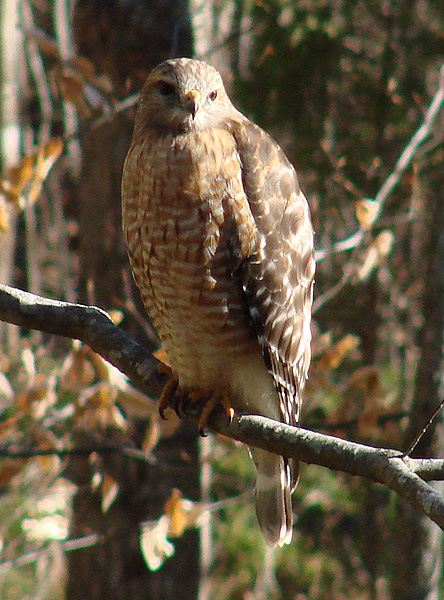
January 20, 2007
Well, it has been 17 years and 850,000+ photos since my first Titmouse photo, and I am still hooked!
My Old Trail list for this report (excluding Nashville Warbler):
Canada Goose
Great Blue Heron
Red-shouldered Hawk
Belted Kingfisher
Northern Flicker
Blue Jay
American Crow
Tufted Titmouse
Carolina Wren
Eastern Bluebird
House Sparrow
House Finch
American Goldfinch
Song Sparrow
Northern Cardinal
Yellow-rumped Warbler
Field Sparrow
Northern Mockingbird
Dark-eyed Junco
White-breasted Nuthatch
White-throated Sparrow
Red-bellied Woodpecker
Hermit Thrush
Carolina Chickadee
Yellow-bellied Sapsucker
Ruby-crowned Kinglet
Swamp Sparrow
Downy Woodpecker
Cedar Waxwing
American Robin
Black-capped Chickadee
Pileated Woodpecker
Turkey Vulture
Mourning Dove